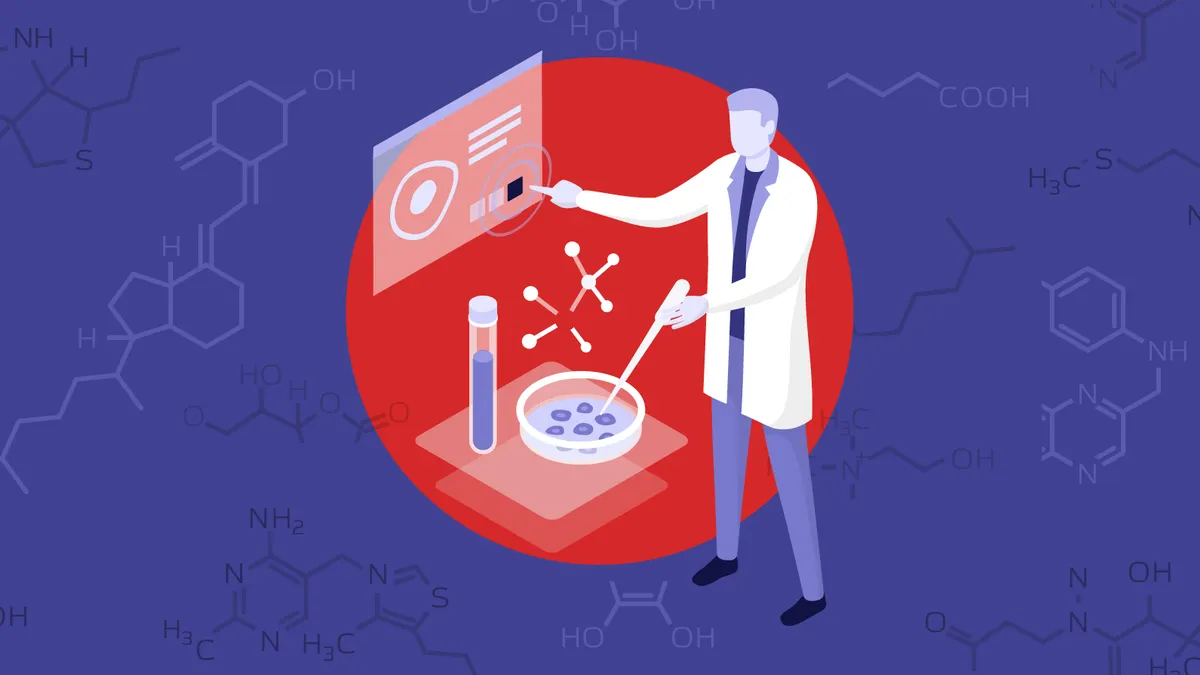Rare diseases pose a significant challenge for healthcare systems, patients and pharmaceutical companies alike. The journey from symptom onset to diagnosis and treatment can take years—sometimes even decades. The scattered and often incomplete data associated with these conditions makes it difficult to identify patients early, track disease progression and improve outcomes.
To overcome these challenges, pharmaceutical companies are increasingly turning to integrated real-world data (RWD) approaches. By combining claims, lab results, electronic medical records (EMR), social determinants of health data, and unstructured physician notes, pharma organizations can gain a 360-degree view of the patient journey. Here’s how integrating RWD helps address key challenges, improves market engagement and ultimately enhances patient outcomes for rare diseases.
What is an integrated data approach?
An integrated data approach captures a holistic view of the patient journey by combining multiple RWD sources. It encompasses claims data, lab and biomarker data, EMR and unstructured physician notes, including details such as why certain treatments were chosen or discontinued, and how disease progression influences therapy decisions.
By integrating these diverse data streams, pharma companies can track patient journeys longitudinally, from precursor symptoms to diagnosis, treatment and disease progression. They can also uncover physician sentiment, gaining insights into their treatment rationales and clinical decision-making captured in notes, and improve patient stratification by identifying patient subgroups based on severity, progression and biomarker status.
This integrated data approach allows pharma companies to overcome several difficulties in working with rare disease data, including:
1. Partial visibility into the patient journey: One of the greatest challenges in rare disease identification is the lack of clear diagnostic codes (ICD codes) and the difficulty in tracking precursor symptoms. Claims data alone, once sufficient for chronic disease tracking, falls short for rare diseases. Without ICD codes, physicians often rely on unstructured notes and lab results to document symptoms and potential diagnoses.
By integrating multiple RWD modalities—including lab data, claims data and unstructured EMR notes—pharma companies can achieve a more comprehensive view of the patient journey. This includes identifying precursor symptoms (e.g., muscle cramps, headaches) that often go un-coded but are documented in physician notes; tracking temporal changes in lab values and biomarker trends over time; and leveraging natural language processing (NLP) to extract disease-related patterns from free-text notes. By combining these data sources, pharma companies can detect subtle patterns indicative of rare diseases, enabling earlier identification and intervention.
2. Loss of data fidelity when linking across vendors: Pharma companies often source RWD from multiple vendors, leading to data fragmentation. The challenge is that when linking datasets from different sources, patient capture rates decrease and data granularity is lost. Inconsistent tokenization practices further reduce the ability to follow individual patient journeys across datasets.
Pharma companies can address this by implementing a single patient token system that spans all data modalities, ensures consistency and preserves fidelity. By using the same tokenized ID across claims, lab and EMR data, companies can follow the complete patient journey without data loss. While repeated tokenization with different vendors can incur additional costs, a single patient token minimizes these expenses while preserving data quality. Additionally, pre-tokenized, de-identified data ensures compliance with privacy regulations while enabling rich longitudinal analysis.
Driving market dynamics and customer engagement with integrated data
An integrated data approach doesn’t just improve clinical insights—it also enhances pharma companies’ market strategies and customer engagement through:
1. Performance tracking and HCP identification
- Physician-level insights: By analyzing prescribing patterns and treatment decisions, pharma companies can identify education and awareness opportunities.
- Health system segmentation: Companies can segment healthcare systems based on their adoption of rare disease therapies, identifying high-potential partners and areas for growth.
- Field team optimization: Integrated data allows field teams to prioritize HCPs who treat undiagnosed or misdiagnosed rare disease patients, driving targeted outreach.
2. Improving market access and coverage
Integrated RWD helps pharma companies better understand payer dynamics like prior authorization insights. By analyzing patient notes, companies can identify common payer barriers (e.g., step edits, testing requirements) and streamline access strategies. It also allows for formulary optimization, as richer payer data reveals coverage gaps, allowing companies to advocate for improved access and reduced treatment delays.
Enhancing patient outcomes with integrated RWD
The future of rare disease treatment lies in data integration. By combining claims, lab results, EMR and unstructured physician notes, pharma companies can overcome the limitations of fragmented data. This integrated RWD approach enables earlier identification of rare diseases, improves diagnostic accuracy and optimizes treatment pathways. Beyond patient outcomes, it empowers pharma companies to refine their market strategies, enhance customer engagement and ultimately bring innovative therapies to patients who need them most.
Want to find out more about how an integrated real-world data approach can improve rare disease patient outcomes? Contact us to learn more about Norstella’s integrated real-world data source, NorstellaLinQ and how Panalgo can help you today.










